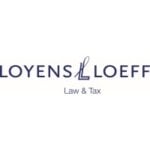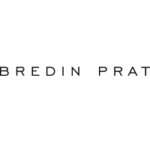-
What proportion of transactions have involved a financial sponsor as a buyer or seller in the jurisdiction over the last 24 months?
While it is impossible to provide a number with precision, financial sponsors are involved (whether as a potential or actual buyer or seller) in the majority of auction transactions in recent years. According to data from Mergermarket, of those buyout transactions that were completed in 2023 and 2024, 28% of the total announced transactions involved a financial sponsor as buyer or seller. Data is not reliably available for the proportion of transactions that are led by portfolio companies of financial sponsors, but it is reasonable to believe this would be a significant portion of transaction activity.
-
What are the main differences in M&A transaction terms between acquiring a business from a trade seller and financial sponsor backed company in your jurisdiction?
Financial sponsors value a clean exit significantly more than trade sellers, due both to their obligation to return money to limited partners, and to the fact that on a portfolio company sale, there is no operating business or management left on the sell side to respond to follow-up or be responsible for claims. Financial sponsor sellers are therefore significantly more likely than trade sellers to rely on third-party escrows (rather than indemnities) and insurance coverage for representations and warranties (“R&W insurance”). They are also much more likely to resist contingent or deferred consideration elements such as earn-outs, and will be much less willing to accept a seller non-compete.
-
On an acquisition of shares, what is the process for effecting the transfer of the shares and are transfer taxes payable?
Each state in the United States will have its own set of statutes applicable to legal entities (including corporation and limited liability companies) and the obligations to effect a share transfer may vary slightly from state to state. However, as a general matter, the process for transferring shares of a US company is fairly straightforward and does not require (as in many other jurisdictions) the participation of a notary.
Typically, applicable state law provides that shares are freely transferrable, with the operative restrictions being imposed by the company itself by way of transfer restrictions in the governing documents. Shares can be transferred by agreement of the parties to do so, which can be documented through a purchase agreement or share transfer form, together with an update of the book entry ledger of the company.
Generally, there are no U.S. federal transfer taxes imposed on the transfer of equity interests. Certain states, however, may impose transfer taxes on such transfers in certain circumstances, including where a target’s assets are comprised of a minimum amount of real estate or related assets.
-
How do financial sponsors provide comfort to sellers where the purchasing entity is a special purpose vehicle?
Most “platform” acquisitions by financial sponsors are made through a special purpose vehicle.
For transactions that do not sign and close simultaneously, it is typical for financial sponsors to provide an equity commitment letter, addressed from the fund to the special purpose vehicle, committing to fund the equity component of the purchase price (or potentially, the full purchase price, less any debt or other amounts otherwise funded) at the closing subject to the satisfaction of the conditions of the purchase agreement. A common negotiation is whether the company itself will be granted certain rights of enforcement (whether as a third-party beneficiary or otherwise) under the equity commitment letter.
If a portion of the purchase price will be funded through debt, the buyer will often also deliver a debt commitment letter, which together with the equity commitment letter will cover the full purchase price.
-
How prevalent is the use of locked box pricing mechanisms in your jurisdiction and in what circumstances are these ordinarily seen?
Locked box pricing mechanisms are significantly less common in the United States than in other jurisdictions, with the vast majority of transactions using a post-closing purchase price adjustment, which typically adjusts for cash, indebtedness, working capital, and sometimes transaction expenses. Locked box pricing mechanisms are very infrequently seen in the market, but are increasing in popularity due to the increase in cross-border and multijurisdictional transactions.
Despite locked box mechanisms being generally seen as a seller-favorable concession outside the United States, in the United States even sellers are often more comfortable with closing accounts, and lack of familiarity with a locked box structure can sometimes slow down negotiations. Sell-side auction drafts will often feature a closing accounts mechanism, and buyers will often propose them if given the opportunity to produce a first draft. Closing accounts adjustments are also almost exclusively used in businesses where there are likely to be significant adjustments due to business seasonality or other unevenly distributed revenue throughout the year, or where there is expected to be a significant amount of time between sign and close.
Another consideration that impacts the popularity of the locked box mechanism in the United States is speed to signing. A locked box requires greater pressure on producing an accurate balance sheet earlier in the process, whereas closing accounts can, to a certain extent, defer this until after post-signing or post-closing. Given the speed at which transactions are signed in the highly competitive US market, the upfront time costs associated with a locked box mechanism may play a part in its limited diffusion in the market.
-
What are the typical methods and constructs of how risk is allocated between a buyer and seller?
The first element of risk allocation is, as in any jurisdiction, baked into the headline purchase price. Otherwise, buyers and sellers allocate risk through representations and warranties (supported by indemnification for breach), to address risk items that are unknown at signing or closing, and specific indemnities for risk items that are known but where there is a gap in the parties’ respective expectations on the likelihood and quantum of liability. Representations and warranties are made at signing and typically “bought down” at closing. Often, there will also be a stand-alone indemnity for tax matters that is allocated on an “our watch, your watch” basis.
In transactions with financial sponsors, typically the financial sponsor’s vehicle or parent entity makes only fundamental representations regarding its title to the shares and ability to transfer them. Operational representations and warranties will often be made by the Company itself.
A unique element of the United States market is the reliance on complex disclosure schedules rather than blanket disclosure against a data room or documents that have been “fairly disclosed”. The concept of fair disclosure is very uncommon in United States transactions, with buyers and sellers spending significant effort to produce an agreed-upon set of specific disclosure schedules that quality the representations and warranties in the purchase agreement.
Indemnification is backstopped through three main ways: direct indemnification by the breaching party (less common), an indemnification escrow account (common) and the use of representations and warranties insurance (“RWI”). Transactions may also have an element of all three of these sources of indemnification.
Common limitations on indemnification are:
- the exclusion of de minimis amounts, below which individual items are not indemnified (which can also include a “tipping basket” concept allowing for smaller de minimis items to be aggregated in order to be entitled to indemnification);
- the implementation of an aggregate threshold, below which no item is indemnified;
the implementation of an indemnity cap (which can be different for breaches of fundamental warranties and operational warranties); and time limits on indemnification (which can be different for breaches of fundamental warranties and operational warranties).
-
How prevalent is the use of W&I insurance in your transactions?
Representations and warranties insurance (“RWI”) is very common in United States transactions, with some publicly available estimates stating that approximately 40% of transactions in the past 24 months have used RWI. The market for RWI in the United States is very robust, with insurers willing to cover a broad variety of industries and having a lower threshold for eligible transaction size. Many auction draft purchase agreements are prepared on the assumption that a purchaser will acquire RWI, with significant deviations in the terms and conditions of a transaction in which RWI will be used and one where it will not. These changes are most often seen in the usage and amounts of third-party escrows, survival, sandbagging, materiality scrapes, and the representations and warranties themselves. Representations and warranties are increasingly negotiated with the expectation of coverage, and often with the review and input of the RWI insurers themselves as to what will be covered.
-
How active have financial sponsors been in acquiring publicly listed companies?
As the private-equity market has become more mature, financial sponsors have been increasingly active in take-private activity. Data from Mergermarket shows a total of 92 take-private transactions by financial sponsors in the last 24 months.
-
Outside of anti-trust and heavily regulated sectors, are there any foreign investment controls or other governmental consents which are typically required to be made by financial sponsors?
Outside of anti-trust and heavily regulated sectors, financial sponsors may encounter foreign investment regimes that could require notification. In the United States, transactions involving foreign investors that result in foreign control over a U.S. business and certain non-controlling investments in sensitive U.S. businesses may require notification to the Committee on Foreign Investment in the United States (“CFIUS”). Even if notification is not mandatory, some financial sponsors may voluntarily notify CFIUS of such transactions, as well as certain real estate transactions, to mitigate the risk of intervention later. Other jurisdictions—such as EU member states, the UK, Australia, Canada, and others—have implemented similar foreign investment regimes aimed at protecting national security.
-
How is the risk of merger clearance normally dealt with where a financial sponsor is the acquirer?
Under the Biden Administration, there has been more rigorous scrutiny of transactions involving private equity sponsors. The 2023 Merger Guidelines include guidelines relevant to private equity sponsors, e.g., the agencies may investigate the pattern or series of acquisitions as a whole, “if an individual transaction is part of a firm’s pattern or strategy of multiple acquisitions.” Further, the new HSR rules (pending implementation as of the date of this publication) increase obligations on private equity firms. Under the new HSR rules, financial sponsor acquirors must now provide detail on the sponsor’s ownership structure. Given this increased antitrust scrutiny of private equity sponsors as acquirers, sellers may request that even financial sponsor acquirers (in matters with limited or seemingly no competitive overlaps) agree to a “hell or high water” obligation to litigate, to divest certain assets, and/or to otherwise take all necessary steps to obtain regulatory approval. Such obligations may be unconditional, although acquirers can negotiate with sellers to limit such obligations—for example, limiting divestitures to not cause a burdensome or material adverse effect. Additionally, a seller may request that a financial sponsor acquirer not enter into any post-signing agreements or make any other acquisitions that could increase the risk of antitrust scrutiny.
-
Have you seen an increase in (A) the number of minority investments undertaken by financial sponsors and are they typically structured as equity investments with certain minority protections or as debt-like investments with rights to participate in the equity upside; and (B) ‘continuation fund’ transactions where a financial sponsor divests one or more portfolio companies to funds managed by the same sponsor?
Minority investments have long been a feature of the private-equity market, particularly in small cap and venture transactions. Certain financial sponsors specialize in non-control investment, and many of the funds that historically have focused on control transactions have been exploring this element of the market. Recently, an increasing number of hybrid or special opportunity funds have been established to respond to the increasing desire in the market for alternative and flexible investment structures. We expect this to be an area of significant growth in the market.
Similarly, continuation fund transactions or secondary transactions led by general partners are increasing in popularity as well, and alongside the increasing market for minority investments.
-
How are management incentive schemes typically structured?
In the U.S., most private equity sponsors grant equity incentives in the form of “profits interests” in a parent entity of the operating company (provided that the structure involves an entity taxed as a partnership). Profits interests are equity interests in entities taxed as partnerships that entitle the holder to a portion of the partnership’s future profits and appreciation in value in excess of the fair market value (or a premium thereon, as determined by the partnership) of the entity as of the grant date (often called the “distribution” or “participation” threshold). The economic benefit of profits interests are generally realized, if at all, when cash distributions are made by the partnership in accordance with the distribution waterfall set forth in the partnership’s governing documents, so long as the profits interests have satisfied relevant vesting conditions. Distributions are typically made upon a liquidity event with respect to the partnership (generally, a change in control/exit by the private equity sponsor).
If instead issuing equity in a parent entity taxed as a corporation, U.S. private equity sponsors will most often grant awards in the form of stock options. Stock options provide holders with the opportunity to purchase a specified number of shares in the issuer at a pre-determined price (called the “strike” or “exercise” price), subject to the satisfaction of applicable vesting criteria. In the U.S., stock options can be granted as either incentive stock options (ISOs), which are eligible for preferred tax treatment if certain requirements are satisfied, or, more commonly, nonstatutory stock options (NSOs).
Notwithstanding the foregoing, restricted stock units or phantom equity (collectively, RSUs) are popular forms of equity incentives in both partnerships and corporations. RSUs are contractual agreements to provide the grantee with cash and/or shares in the equity issuer upon the satisfaction of certain vesting conditions, with the value of the consideration ultimately provided typically determined based on the value of the issuer’s shares on an exit. Because RSUs are not actual ownership interests in the issuer, and can be settled in cash if provided for by the terms of the award, sponsors will use RSU awards for equity grants “deeper” into the organization – i.e., awards for lower-level executives or mid-level management.
In all cases, equity incentive awards in the U.S. are generally subject to a combination of time-based and performance-based vesting criteria (typically, multiple on invested capital or multiple on money returns, or similar company performance hurdles), and require the holder to remain employed through the relevant vesting event (although c-suite executives will sometimes negotiate for accelerated vesting upon certain “good leaver”-type terminations). There is no “one size fits all approach” to vesting – the sponsor and the management team will work together to determine an appropriate regime that incentivizes management to generate value and encourages retention.
-
Are there any specific tax rules which commonly feature in the structuring of management's incentive schemes?
Yes – tax treatment is typically the key determinative factor for a sponsor in determining the appropriate structure for its incentive scheme. In the U.S., management typically expect to receive equity incentives gratis, with no tax owed on grant or vesting, and for the award to be eligible for capital gains tax treatment, if possible, once management receives proceeds in respect of their awards.
It is for this reason that profits interests have become the most popular form of incentive equity for management teams in U.S. private equity-backed companies. If a profits interest award satisfies applicable “safe harbor” requirements under the U.S tax code, it can be granted gratis, will not be subject to tax on grant or vesting, and tax will be owed at capital gains rates on any proceeds received thereon only when received. If any tax is owed prior to receipt of such proceeds (due to the partnership increasing in value during the life of the sponsor’s hold), the partnership will generally make tax distributions to holders to cover such amounts. To satisfy the “safe harbor,” profits interests must, among other things, have a $0 value at grant on a “liquidation” basis (meaning that, if the partnership were wound up and all cash was distributed on the date of grant, the profits interest would not be entitled to any proceeds), and be held for at least two (2) years from grant, and the holder must be treated as a partner in the partnership equity issuer for U.S. tax purposes from the grant date. Profits interest holders are also encouraged (and often, required) to file “protective” Section 83(b) tax elections on their awards to preserve capital gains treatment if the award turns out not to satisfy the safe harbor requirements (e.g., if a sale happens within two (2) years following grant). U.S. profits interest awards often are not tax efficient outside of the U.S. because, among other things, the liquidation value methodology used to establish this tax treatment is generally not regarded by tax authorities outside of the U.S.
Where equity is issued by a corporation, ISOs provide a path to capital gains treatment (subject to certain limitations), so long as the holder does not dispose of the underlying shares until at least two (2) years after the ISOs were granted, and one (1) year after exercising the ISOs for the underlying shares. If the foregoing requirements are satisfied, no tax will be owed on grant, vesting, or exercise, and capital gains tax will be owed on the taxable gain realized by the holder upon the disposal of the shares. If the foregoing requirements are not satisfied, the ISO will be treated as an NSO. NSOs (whether granted as such, or treated as such due to failure to satisfy ISO requirements) are not taxed on grant or vesting, and are subject to ordinary income tax upon exercise based on the “spread” between the exercise price and the value of the shares at exercise; the holder will also be taxed at capital gains rates on the gain realized upon the disposal of the underlying shares. The foregoing assumes that, in all cases, the stock options are granted with an exercise price that is equal to or greater than the fair market value of one (1) underlying share on the date of grant. NSOs may be granted with a lower exercise price, but if so, they are subject to the requirements of Section 409A of the U.S. tax code, which can be difficult to navigate, and often frustrating to the parties’ commercial aims. Note further that because of the aforementioned ISO treatment requirements (as well as other technical requirements, such as holders being limited to treating no more than $100,000 worth of options that become exercisable in a given year as ISOs), when granting options, private equity sponsors generally prefer NSOs over ISOs. ISOs are seen more commonly in start-up and pre-revenue companies where initial share value is low and the awards are expected to be held for a significant period of time following grant.
RSUs are taxed at ordinary income rates upon both vesting and settlement. In private companies, RSUs generally vest and settle simultaneously, which creates a single tax event upon the holder’s receipt of proceeds.
Where awards are subject to ordinary income tax, the employing entity has a withholding obligation under U.S. tax law, and is also entitled to take a compensation tax deduction on the value of the award. No such withholding obligation (or deduction) exists on a capital gains tax event.
-
Are senior managers subject to non-competes and if so what is the general duration?
In general, sponsors look to require management to agree to 12-24 month post-termination non-competes as a condition of their awards. However, the landscape in the U.S. is rapidly changing on this point. At the moment, the enforceability of a non-compete is determined by U.S. state law (typically, the law of the U.S. state where the subject individual lives and principally performs services). In certain states, like California and Minnesota, post-termination non-competes are generally unenforceable; in other states, like Massachusetts, Colorado, and Georgia, state legislatures have implemented laws that limit the breadth and duration of non-competes. In addition, the U.S. Federal Trade Commission (FTC) is seeking to ban (or significantly limit) the enforceability of restrictive covenants nationwide (although practitioners expect the FTC’s position on this to change upon the new presidential administration taking office).
Note that the above concerns are generally limited to non-compete covenants. Sponsors typically condition equity grants, in all cases, on the grantee agreeing to perpetual confidentiality, intellectual property assignment, and non-disparagement covenants, as well as 12-24 month post-termination employee and customer non-solicit covenants (subject to limitations in states where customer non-solicits are considered non-competes under applicable statute or case law).
-
How does a financial sponsor typically ensure it has control over material business decisions made by the portfolio company and what are the typical documents used to regulate the governance of the portfolio company?
The financial sponsor will have multiple layers of control, beginning at the most basic level with its rights as an equity holder. The financial sponsor will also typically have representation on the board of the portfolio company and will have the right to appoint and remove its designated directors at its discretion. Operational managers will typically have certain delegated authorities, beyond which they must obtain approval from the board to take certain actions. In a control transaction, this is typically sufficient to ensure full control by the financial sponsor. In non-control transactions, the governing documents of the portfolio company will also contain certain customary minority protections. The most basic set of minority protections will seek to preserve solely the economic value of a financial sponsor’s investment, without granting significant operational control. As the financial sponsor’s ownership percentage increases, minority protections will increasingly include operational elements, up to a full co-control scenario with a co-investor.
The governing documents used will depend on the legal form of the portfolio company. For a corporation, bylaws and a stockholders agreement are the key documents (with the stockholders’ agreement containing the operative governance provisions). For a limited liability company, the limited liability company agreement (“LLCA”) will contain the operative governance provisions. Another common legal structure for a financial sponsor’s investment is to hold interest in the company through a limited partnership managed by a general partner. In this case, the parent entity limited partnership is largely a passive investor in the portfolio company, with control managed through the general partner entity and the board. Here, the operative document is the limited partnership agreement, which must be reviewed in connection with the LLCA of the general partner.
-
Is it common to use management pooling vehicles where there are a large number of employee shareholders?
In general, pooling vehicles are not used in the U.S. The exception to this is where management must hold profits interests in a partnership indirectly in order to avoid being treated simultaneously as K-1 “partners” and W-2 “employees” of the equity issuer. This arises where management’s legal employer is a “disregarded” entity for U.S. tax purposes, and no “regarded” entity sits between the employer and the equity issuer. In these situations, if management were to hold their awards directly in the partnership, it would create certain tax-related complications for both the individual and the company (including improper tax reporting and withholding by the company, and the disqualification of the company’s Section 125 “cafeteria plan,” which permits employees to contribute funds pre-tax to their company-sponsored health insurance). To avoid this (while still preserving the desired tax efficiencies of the flow-through structure for the company), the partnership typically will issue profits interests into a separate “aggregator” entity, which, in turn, will issue profits interests to members of management that track the value of the underlying profits interests in the partnership. The aggregator profits interests must satisfy all of the same “safe harbor” requirements in order for the holders to receive the desired tax treatment.
-
What are the most commonly used debt finance capital structures across small, medium and large financings?
The type of debt finance capital structures available to a sponsor will largely depend on the size of the acquisition financing, as well as other considerations such as industry sector, credit quality of the target company, market strength of the sponsor and investor demand. Large capital financings will typically involve a combination of senior secured syndicated term loan “B” facilities, secured or unsecured high yield notes and a senior secured cash flow revolving facility. If additional capital is required in excess of what can be accessed on a senior secured basis, second lien term facilities or notes or preferred equity instruments may also be utilized, and depending on the asset base of the target company, the cash flow revolver may be replaced by an asset-based credit facility. In recent years, there has also been a significant increase in the number of private credit funds successfully offering an alternative to the syndicated market in the form of so-called “unitranche” financings, even for large capital financings. In medium capital financings, sponsors tend to obtain senior secured term loan facilities from either the syndicated term loan “B” market or one or more commercial banks or private credit funds in “club” or direct lending transactions (often with a “delayed draw” feature), whereas small capital financings will usually only take the form of such bilateral or “club” transactions provided by commercial banks or private credit funds (but not the term loan “B” market). Both medium and small capital financings will also often include a working capital (or assetbased) revolving facility, and may additionally involve, particularly for smaller financings, subordinated or mezzanine financing and/or warrants.
-
Is financial assistance legislation applicable to debt financing arrangements? If so, how is that normally dealt with?
The United States does not have legislation expressly prohibiting or restricting financial assistance, i.e., a company granting security, guaranties or other credit support for the acquisition of its or its direct or indirect parent’s shares in connection with an acquisition financing transaction. Though corporate considerations, such as corporate benefit and fiduciary duties remain a consideration.
-
For a typical financing, is there a standard form of credit agreement used which is then negotiated and typically how material is the level of negotiation?
Which form credit agreement is used as the basis for documentation in a transaction will typically depend on the size of the acquisition financing and the bargaining power of the sponsor. Accordingly, in small capital and lower middle market transactions, it is common for the applicable commercial bank or private credit fund providing the financing to impose its own lender-favorable standard form or suggest the use of forms they are familiar with based on comparable financings led by that financial institution. As the size of a financing increases, the form of credit agreement used in transactions is typically a sponsor selected precedent credit agreement that contains much of the flexibility that a sponsor has received on their recent transactions. The scope of negotiation of a precedent credit agreement will vary depending on similar factors. In bilateral or “club” transactions for small capital financing, credit agreements may not be heavily negotiated since the parties are only focused on a few key items in the agreement and generally the bargaining power may rest with the applicable lenders. In medium and large capital acquisition financings involving a competitive commitment letter process, a majority of the key commercial terms will be negotiated during such process and prior to the documentation stage, which, together with the prior selection of an agreed precedent by the sponsor (rather than the lender), may decrease the overall level of negotiation of the credit agreement. However, there may still be a degree of negotiation depending on how recent that selected precedent was, the credit quality of the target company, the relative bargaining power of the sponsor and, in the case of syndicated term loan “B” financings, overall market demand from institutional investors. Generally, credit agreements in private credit transactions will be more heavily negotiated than broadly syndicated transactions. Though the Loan Syndications and Trading Association (the LSTA) maintains certain model provisions for a leverage loan credit agreement that parties may look to in certain cases, there is no form credit agreement for leverage loans.
-
What have been the key areas of negotiation between borrowers and lenders in the last two years?
The key areas of negotiation between borrowers and lenders often vary depending on the nature of the financing, though consistently debt and lien incurrence flexibility, EBITDA and other financial definitions and restricted payment flexibility remain areas that see significant negotiation across deal sizes. Negotiations in syndicated term loan “B” financings, which generally have terms that are more flexible than what is accepted by commercial banks and credit funds in the direct lending market, have recently been focused on building protections against socalled liability management (“LME”) transactions that have become more prevalent in the market, in particular protections against “value leakage” from the guarantor group or erosion of collateral support. In the direct lending loan market, as part of private credit funds becoming more active in middle and large capital financings and competing with the syndicated debt market, the terms of such financings over the last few years have started to gradually converge with the syndicated market as sponsors pushed to incorporate terms previously only found in term loan “B” facilities. For example, flexibility to incur pari passu incremental equivalent debt, increased ability to make restricted payment or junior debt payment subject to satisfaction of certain leverage ratios, additional and broader EBITDA addbacks, more permissive financial calculations and even (in larger transactions) covenant lite structures are appearing in the direct lending market and are now key areas of negotiation.
Nonetheless, the direct lending market remains more conservative than the syndicated market, particularly in smaller deals, and private credit funds and other direct lenders have retained their focus on a more limited debt incurrence package (including rights of first offer for existing lenders and no or very limited MFN carveouts) and tighter guardrails against “value leakage” relative to term loan “B” facilities. Private credit funds have also pushed for many of the same LME protection provisions being pushed in the syndicated market (oftentimes with fewer of the exceptions commonly found in that space).
-
Have you seen an increase or use of private equity credit funds as sources of debt capital?
The past few years have seen a significant increase in private credit fund activity, in particular in the medium and large capital financings. In both the middle and upper middle markets we have seen private credit firmly establish itself as a viable alternative to the syndicated lending market, and in some cases has become a primary source of financing for sponsors in acquisition financings, who are attracted to the reduced execution risk, speed and flexibility of private credit lenders. This growth has only been more pronounced in the past few years due to the volatility in the syndicated lender markets, and can also be witnessed in the number of traditional commercial banks moving to form their own private credit arms to take advantage of this growing market.
United States: Private Equity
This country-specific Q&A provides an overview of Private Equity laws and regulations applicable in United States.
-
What proportion of transactions have involved a financial sponsor as a buyer or seller in the jurisdiction over the last 24 months?
-
What are the main differences in M&A transaction terms between acquiring a business from a trade seller and financial sponsor backed company in your jurisdiction?
-
On an acquisition of shares, what is the process for effecting the transfer of the shares and are transfer taxes payable?
-
How do financial sponsors provide comfort to sellers where the purchasing entity is a special purpose vehicle?
-
How prevalent is the use of locked box pricing mechanisms in your jurisdiction and in what circumstances are these ordinarily seen?
-
What are the typical methods and constructs of how risk is allocated between a buyer and seller?
-
How prevalent is the use of W&I insurance in your transactions?
-
How active have financial sponsors been in acquiring publicly listed companies?
-
Outside of anti-trust and heavily regulated sectors, are there any foreign investment controls or other governmental consents which are typically required to be made by financial sponsors?
-
How is the risk of merger clearance normally dealt with where a financial sponsor is the acquirer?
-
Have you seen an increase in (A) the number of minority investments undertaken by financial sponsors and are they typically structured as equity investments with certain minority protections or as debt-like investments with rights to participate in the equity upside; and (B) ‘continuation fund’ transactions where a financial sponsor divests one or more portfolio companies to funds managed by the same sponsor?
-
How are management incentive schemes typically structured?
-
Are there any specific tax rules which commonly feature in the structuring of management's incentive schemes?
-
Are senior managers subject to non-competes and if so what is the general duration?
-
How does a financial sponsor typically ensure it has control over material business decisions made by the portfolio company and what are the typical documents used to regulate the governance of the portfolio company?
-
Is it common to use management pooling vehicles where there are a large number of employee shareholders?
-
What are the most commonly used debt finance capital structures across small, medium and large financings?
-
Is financial assistance legislation applicable to debt financing arrangements? If so, how is that normally dealt with?
-
For a typical financing, is there a standard form of credit agreement used which is then negotiated and typically how material is the level of negotiation?
-
What have been the key areas of negotiation between borrowers and lenders in the last two years?
-
Have you seen an increase or use of private equity credit funds as sources of debt capital?
























